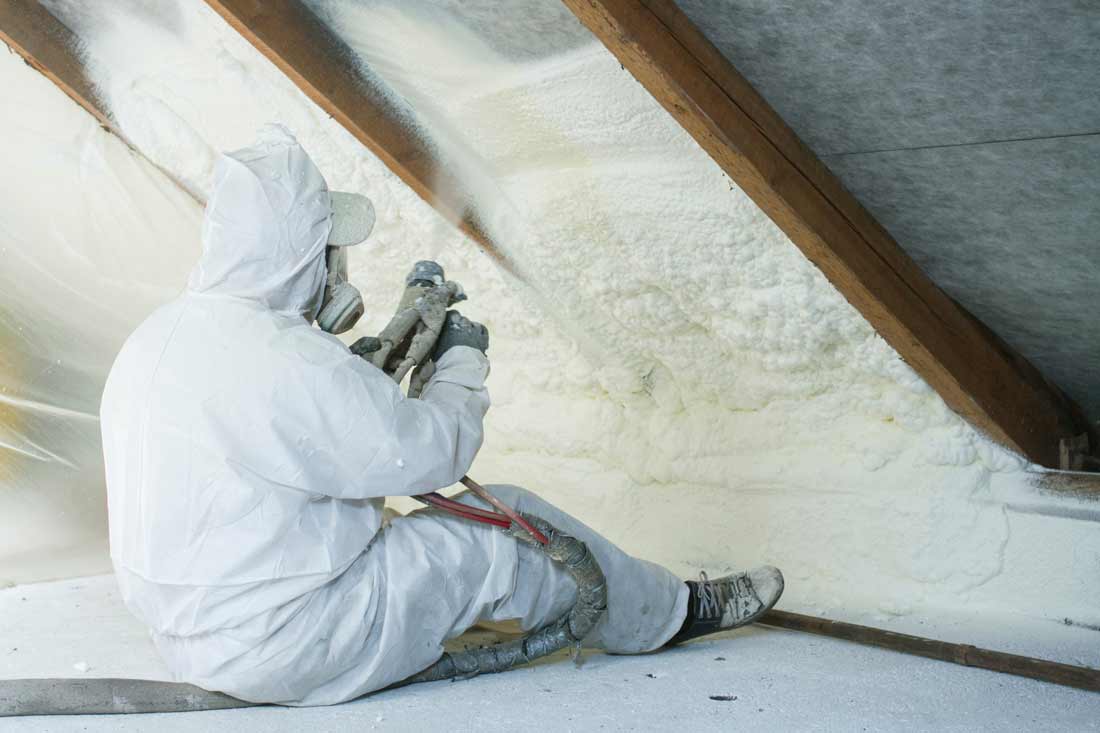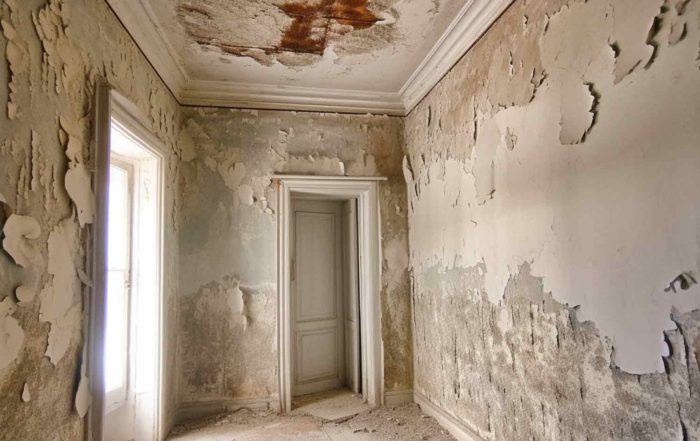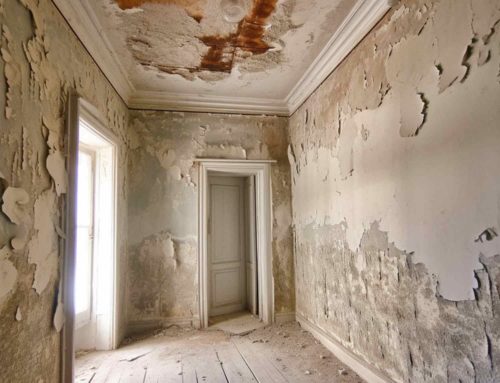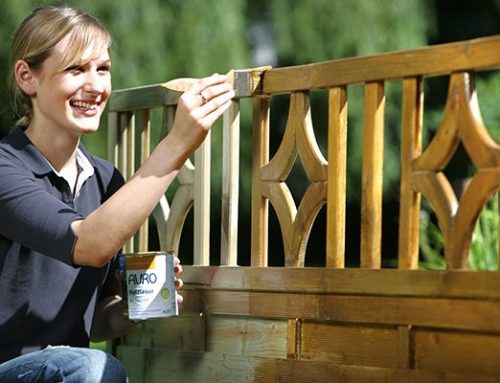The importance of home insulation cannot be understated. Having your home insulated is a great way to increase the energy efficiency of the household, decrease the electricity bill, and basically create a comfortable living space for yourself. To make this investment a successful one, you need to know which kind of insulation is best suited to your home, the climate conditions of the area you live in, and, of course, your budget. In this article, we will be talking about one specific type of insulation – spray foam insulation, and why you should consider getting one for your building.
Spray foam is far from ‘natural’ though, and although something I would not choose myself, the information is here for you regardless!

What is spray foam insulation?
Unlike the traditional insulation products like insulating sheets and rolls, spray foam insulation is sprayed onto the area you want to insulate. It goes by a number of names, like: spray insulation, foam sealant and expanding foam, probably because of how it works. It is produced by a combination of two different liquid chemicals that expand into foam froth on application. This hardens in approximately 3 to 5 minutes to make a rigid foam layer that serves as insulation.
You’ll find a variety of spray foams in the market because a lot of companies have begun to manufacture it. These products will differ mainly in their constitution. Some spray foams are composed of synthetic materials like gas propellants and chemicals that have a negative consequence on the environment; whereas, other products have organic origins like soy and vegetable oil.
Types of spray foam insulation
The two widely found types of spray insulation are closed-cell foam insulation and open-cell foam insulation. Which form of spray foam insulation is better than the other is entirely dependent on your needs.
Open-Cell Foam Spray Insulation
One of the properties of spray foam that determines its insulation capacity is the bubbles (cells) that are present in it. In open-cell foam, these cells are open, or uncompressed. This decreases the density of the spray foam and makes the foam softer and more flexible compared to closed-cell foam insulation. It also has a lower R-value than closed-cell foam because of its low density. The R-value of a substance is the degree of resistance of a material to heat. The higher the R-value of a material, the better the insulation it provides. Open-cell foam insulation is great if you want to have insulation in the nooks and crannies of your home. It also adds to the sound insulation and is more affordable than closed-cell foam insulation.
Closed-Cell Foam Spray Insulation
Closed-Cell Foam insulation, as you might have guessed, involves encapsulated bubbles or cells. This gives this spray foam a higher density and, consequently, a higher R-value than the open-cell foam insulation. Because of these properties, this type of insulation is not very flexible and harder. The expandability of this foam is also comparatively less than that of open-cell foam insulation. This type of insulation could be ideal for you if you have space issues or want to add to the structural integrity of the building. In addition to this, it can act as a vapour barrier and reduce condensation problems.
Why choose a spray foam insulation?
We’ve already established that home insulation makes way for an energy-efficient household by preventing energy losses from heating or cooling, but out of all other options, why should one choose spray foam insulation?
Spray foams are easy, quick and super convenient to apply, and can work on a range of surfaces like metals, woodwork, tiles, etc. Most spray foams include a lightweight polymer, such as polyurethane, which allows for a good thermal resistance coupled with low thermal conductivity. This combination decreases energy losses and is essential in maintaining a controlled environment indoors. It also minimises the influence of extreme external temperature changes on the internal conditions.
A lot of people find spray foams to be good air barriers as well. The polyurethane foam of spray foam kits expands by 8:1, which makes them ideal for filling our spaces, cracks, and holes – blocking out cold draughts in winters. The spray foam also can be used to fill cavities and uneven spaces in a building’s construction because of its consistency and expandable nature (it hardens to take the shape of the void it is sprayed into).
DIY Spray Foam Kits
If you’ve done your own research on spray foam insulation, you’re bound to have come across the Do-It-Yourself (DIY) Spray foam kits.
What are DIY Spray Foam Kits?
DIY spray foam insulation kits are pressurised chemical canisters that dispense polyurethane foam. There are two types of kits, containing two different types of foams that we discussed above. The open-cell foam kits have one container; whereas, the closed-cell foam kit has two containers with two different chemicals that mix on application to form the insulating foam.
Things to Consider before Buying a Spray Foam Insulation Kit
Area of Insulation for spray foam
The first thing to consider is the total area you want to insulate. You can buy a number of spray foam kits depending on the degree and areas of insulation you need – whether you want to block cold draughts, insulate the roof, or the walls, or just fill a few cavities in your building.
Type of Spray Foam
The type of insulation you are looking for is definitely going to influence your choice of kits. If you are looking for a higher level of insulation, serves as a vapour barrier and provides structural integrity, you might want to go with closed-cell spray foam kits. Open-cell spray foam kits would be ideal if you are looking to increase the soundproofing of your building or just want to fill cracks, holes and spaces.
Application of spray foam
While spray foam insulation is relatively easy to apply and can be done by the self, the open-cell spray foam kits might be a better option if you want an easier application because it is super light and pliable.
Accessories for spraying foam
A lot of spray foam kits on the market come with a variety of accessories to make the installation process a whole lot easier. It is always advisable to buy a kit that comes with different nozzles, a hose and a spray gun. The size tank is also an important consideration while buying a kit.
Effectiveness of spray foam
It is essential that you educate yourself on how effective the spray foam kit is, which is going to depend on your requirements. If you are looking for something that serves as a vapour barrier, is soundproof, or significantly tough, etc. you should definitely do some research and go through all your available options before settling on one.
General Costs and Savings of spray foam insulation
One of the downsides of spray foam kits is that it can be a bit costlier than other PVC sheets and rolls. While the price of these kits differs by brand, the National Insulation Association has estimated insulation to cost an average of £20 to £50 per square metre. The thickness of the foam also influences the cost of insulation. Thinner coatings of spray foam are cheaper than thickly applied layers.
Advantages of spray foam insulation
Draught-proof building
Because a lot of spray foam kits are great insulators and can serve as vapour and air barriers, they can be excellent for preventing cold draughts from entering through spaces in the windows, holes, cracks, suspended timber floors, the attic and more. Because spray foams can be sprayed onto hard-to-reach places, they can be great to block out draughts from areas that could not be insulated by other means.
Enhanced Structure
Closed-cell foam insulations can be pretty rigid after drying, which makes them great support for the building. If your building has thin walls, it is highly recommended to have spray foam insulation to improve the structural integrity of the building. It
Long-Lasting
Unlike other insulation methods, spray foam insulation is known to last about 20 years in proper installation. Depending on the quality of the foam, it might be more effective in the long-term compared to other methods.
Vapour Retarders
The closed-cell spray foam kits in the market do not absorb the moisture in the air, which prevents the vapours from reaching and damaging the building fabric, unlike the cheaper cellulose and fibreglass insulation.
Disadvantages of spray foam insulation
Expensive
As discussed above, this type of insulation is a bit more expensive than other home insulation methods like fibreglass and cellulose.
Not Environmentally Friendly
Spray foam kits usually have a synthetic formulation of non-biodegradable chemicals. This can harm the natural environment when this insulation is sprayed or disposed of.
In light of all of this, whether or not your home needs a spray foam insulation and the type of spray foam kit you need to use entirely depends on your building requirements and budget. Spray foam insulation is a long-term investment, but not necessarily one we would advise, so if you are going to do it, you should definitely have a professional install it for you to ensure the longevity and effectiveness of the insulation.
Natural Paint vs Synthetic Paint: Understanding the Differences
When it comes to choosing paint for your home or workplace, understanding the differences between natural paint and synthetic paints can help you make an informed decision. Both types of paint have their advantages and [...]
What are the ingredients in natural paint? A Closer Look
Modern natural paints have evolved significantly from their historical counterparts, combining ancient wisdom with contemporary technology to create environmentally friendly and health-conscious alternatives to conventional paints. This article will explore the key ingredients commonly [...]
How was natural paint made? A Historical Perspective on Natural Paints: Origins and Production Methods
Natural paints have become increasingly popular as eco-conscious consumers seek to reduce their environmental footprint and create healthier indoor environments. But long before the current trend, natural paints played a crucial role in human history, [...]
What are Natural Paints? A Sustainable Solution for Healthier Indoor Air Quality
In recent years, the demand for eco-friendly products has steadily increased, as individuals and businesses alike strive to reduce their environmental impact. One area that has seen significant growth is the realm of natural paints, [...]
Can Breathable Paint Prevent Mould?
The Benefits of Using Natural and Breathable Paints and Plasters Mould is a common issue in many homes, (go check for mould if you haven't!) often resulting from trapped moisture, inadequate ventilation, or both. [...]
Is Breathable Paint Waterproof? Exploring the Characteristics and Benefits
Breathable paint has become a popular choice for homeowners and decorators alike, especially for those seeking a more eco-friendly and healthier alternative to traditional paints. While it is well known for its ability to [...]

Hi! I’m Chris, the founder of The Organic & Natural Paint Co, and I’m focused on the education and promotion of natural non toxic alternatives to chemical laden everyday products that we just take for granted. We have a choice, and I want to raise awareness of alternative products that don’t actually harm us!
This company is my way of pushing the awareness of better indoor air quality, something that I am personally passionate about due to my own children’s breathing medical conditions. I just couldn’t paint with big brand standard petrochemical paint any longer and wanted another solution.
Read more: About me
Twitter: NaturalPaintCo
Instagram: thenaturalpaintco



















